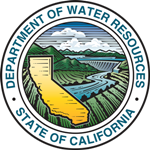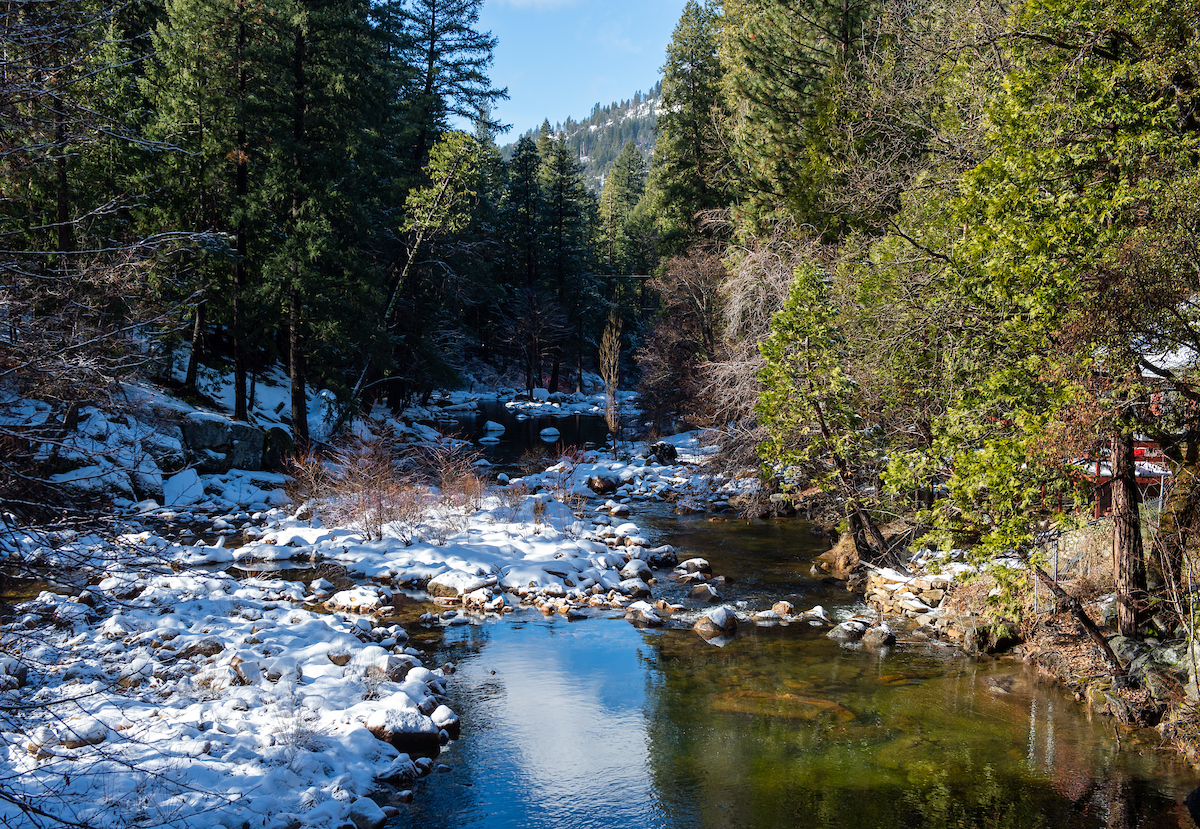 From the Department of Water Resources:
From the Department of Water Resources:
DWR has finished the April 26, 2022 Bulletin 120 (B120) forecast update. The forecast includes observed conditions through the morning of Tuesday, April 26, 2022.
The forecasts are posted at:
- B120 Update: https://cdec.water.ca.gov/reportapp/javareports?name=B120UP
- B120 Update WY Distribution: https://cdec.water.ca.gov/reportapp/javareports?name=B120DIST
Forecast Summary:
The projected median April-July (AJ) runoff ranges in the major Southern Cascades/Sacramento River basins from 24 percent of average for the Trinity River basin to 66 percent of average for the Pit River basin, in the major San Joaquin River basins from 41 percent of average for the Merced River basin to 51 percent of average for the Cosumnes River basin, and in the major Tulare basins from 18 percent of average for the Tule River basin to 44 percent of average for the Kings River basin.
Since the April 19 B120 Forecast Update was issued, the AJ forecasts for all major basins either increased or stayed the same. Forecast increases were most significant in the Feather, Yuba, American, and Cosumnes basins which all saw increases above 10 percent of average. Forecasts remain unchanged since last week in the San Joaquin and Kaweah River basins. All remaining basins saw modest increases between 1 and 6 percent of average. Forecast increases resulted from the precipitation that fell over the last week which was well above median in basins near the transition from northern to central Sierra and more modest in the more northern and southern basins.
Runoff:
Over the last week, flows in most northern basins have begun to decline from a peak at the end of last week that resulted from recent precipitation. Flows in the central and southern Sierra basins have been relatively steady over the last week. The most northerly and the most southerly basins (Trinity, Sacramento, Tule, and Kern) are all flowing at a rate roughly one third of average. Relative April flow rates in the Yuba, American, Merced, and San Joaquin have been the highest at over 70 percent of average. All remaining basins have been flowing at a rate between 50 and 70 percent of the April average.
Unimpaired flows in Percent of Average for Water Year 2022 are as follows:
|
River |
Oct |
Nov |
Dec |
Jan |
Feb |
Mar |
Oct-Mar |
Apr (Month to Date) |
|
Trinity |
312 |
195 |
40 |
46 |
32 |
28 |
49 |
28 |
|
Shasta |
104 |
104 |
72 |
67 |
29 |
25 |
53 |
39 |
|
Sacramento at Bend Bridge |
125 |
115 |
76 |
54 |
25 |
23 |
51 |
39 |
|
Feather |
348 |
137 |
117 |
74 |
45 |
47 |
79 |
63 |
|
Yuba |
566 |
163 |
117 |
58 |
35 |
42 |
74 |
73 |
|
American |
814 |
198 |
144 |
58 |
40 |
48 |
80 |
75 |
|
Sacramento Region |
233 |
131 |
99 |
60 |
33 |
35 |
64 |
|
|
Cosumnes |
1334 |
151 |
254 |
51 |
28 |
22 |
66 |
52 |
|
Mokelumne |
732 |
234 |
135 |
58 |
49 |
58 |
87 |
63 |
|
Stanislaus |
432 |
161 |
146 |
47 |
47 |
56 |
77 |
63 |
|
Tuolumne |
384 |
176 |
143 |
45 |
39 |
49 |
74 |
66 |
|
Merced |
277 |
167 |
140 |
42 |
36 |
51 |
65 |
72 |
|
San Joaquin |
282 |
170 |
215 |
71 |
67 |
73 |
102 |
74 |
|
San Joaquin Region |
402 |
176 |
165 |
52 |
45 |
53 |
79 |
|
|
Kings |
96 |
100 |
126 |
54 |
49 |
59 |
68 |
68 |
|
Kaweah |
70 |
49 |
99 |
38 |
34 |
42 |
47 |
53 |
|
Tule |
65 |
29 |
95 |
35 |
22 |
26 |
36 |
27 |
|
Kern |
51 |
58 |
72 |
45 |
37 |
34 |
45 |
35 |
|
Tulare Region |
76 |
74 |
104 |
48 |
41 |
47 |
56 |
|
Precipitation:
April for the northern Sierra received considerable precipitation over the last two weeks with the Northern Sierra 8-Station Index accumulating more precipitation than it did over the previous three months combined. The Northern Sierra 8-Station Index totaled 6.1 inches in April which is 141% of the April average. Some precipitation did fall on the central and southern Sierras; however, the San Joaquin 5-Station Index and Tulare Basin 6-Station Index will come in below average at approximately 62% and 44% respectively.
Precipitation summary for Water Year 2022 as of April 28, 2022:
|
Region |
Percent of Average |
Precipitation (inches) |
||||||||
|
Oct |
Nov |
Dec |
Jan |
Feb |
Mar |
Apr (Month to Date) |
WY to Date |
Apr (Month to Date) |
WY to Date |
|
|
Northern Sierra 8-Station Index |
453 |
58 |
144 |
14 |
4 |
16 |
141 |
81 |
6.1 |
39.3 |
|
San Joaquin |
314 |
25 |
195 |
0 |
2 |
26 |
62 |
66 |
2.2 |
24.3 |
|
Tulare Basin |
216 |
7 |
221 |
0 |
9 |
31 |
44 |
62 |
1.1 |
16.0 |
Snowpack:
The statewide snow water equivalent (SWE) based on snow sensors is 7.4 inches which corresponds to 32 percent of normal for this date and 26 percent of the April 1 average. Since April 1, the statewide snowpack has decreased by 2.9 inches. Snowmelt was high at the start of the month decreasing the snowpack to 6.0 inches on April 11, but recent precipitation added almost 3 inches back to the statewide snowpack creating a local peak on April 23rd at 8.9 inches. Since April 23rd the Statewide snowpack has steadily declined. The entire Sierras have seen significant snow over the last two weeks with the majority in the Northern Sierra.
The regional snowpack levels as of the morning of April 28, 2022 stand at the following (based on snow sensors):
|
Region |
No. of Stations |
Avg. SWC |
Percent of April 1 |
Percent of Normal |
|
Northern |
29 |
6.8 |
24 |
32 |
|
Central |
43 |
9.7 |
33 |
39 |
|
Southern |
25 |
4.2 |
17 |
21 |
|
Statewide |
97 |
7.4 |
26 |
32 |
Weather and Climate Outlooks:
According to CNRFC 6-day forecast, small amounts of precipitation is forecasted for the north coast and northern Sierra over the first five days of the forecast with the entire state being dry by the sixth day. The north coast and northeast corner of the state will see precipitation totals of less than half an inch with other impacted areas seeing less than a tenth of an inch. In the northern parts of the state, freezing levels will increase over the next 24 hours from 4,000-6,000 feet and fluctuate between 6,000-10,000 feet over four days before rising to 9,000 to 12,000 feet by the last day of the forecast. In the Central and Southern parts of the state, freezing levels will rise from current levels between 8,000 to 11,000 feet to 10,000 to 13,000 feet by the end of the forecast period.
The NWS Climate Prediction Center (CPC) one‐month (May) outlook issued on April 21, 2022, suggests equal chances of above or below normal temperatures for the coast and suggests above average chances for higher-than-normal temperatures in the remainder of the state. The same forecast suggests the northern half of the state has slightly increased chances for below normal precipitation. For the southern half of the state there is equal chances of above or below average precipitation.
The CPC three-month (May-June-July) outlook, issued on April 21, 2022, suggests equal chances of above or below normal temperatures for the central and northern coasts and for the rest of the state increased chances of above average temperatures are expected. The outlook also shows equal chances of above or below normal precipitation for the central and southern parts of the state except for a small area of the southeast corner which shows increased chances of above normal precipitation. The northern third of the state shows increased probability of below normal precipitation.
According to the latest El Niño/Southern Oscillation (ENSO) discussion issued by the CPC on April 25, 2022, La Niña conditions are present. Equatorial sea surface temperatures (SSTs) are below average across most of the Pacific Ocean. The tropical Pacific atmosphere is consistent with La Niña. These conditions are favored to continue into the Northern Hemisphere summer (59 percent chance during June-August 2022), with a 50-55 percent chance of La Niña through the fall.
Important Links:
Full Natural Flow Data:
- Daily FNF
- Monthly FNF
- Seasonal FNF
- Tableau Dashboard – Historical FNF Comparison (Interactive Data Visualization)
- Tableau Dashboard – Daily FNF (Interactive Data Visualization)
Precipitation Data:
- Latest Northern Sierra 8-Station Precipitation Index Tabular Data
- Latest San Joaquin 5-Station Precipitation Index Tabular Data
- Latest Tulare Basin 6-Station Precipitation Index Tabular Data
- Latest Northern Sierra 8-Station Precipitation Index Plot
- Latest San Joaquin 5-Station Precipitation Index Plot
- Latest Tulare Basin 6-Station Precipitation Index Plot
Snow Data:
- Latest Snow Sensor Report
- Latest Statewide Summary of Snow Water Equivalents
- Tableau Dashboard – Regional Snow Water Equivalent Comparison (Interactive Data Visualization)
Extended Regional Forecasts:
- California Nevada River Forecast Center 6 Day QPF and Snow Level Forecast
- Climate Prediction Center One-Month Outlook Forecasts
- Climate Prediction Center Three-Month Outlook Forecasts
- U.S. Seasonal Drought Outlook
- Weather Forecast Office California Service Area-Products
- El Niño Southern Oscillation (ENSO) Conditions and Weekly Discussion (including La Niña)
- Atmospheric River Scale Forecast Products
Bulletin 120:
- Tableau Dashboard – Snow Product Comparison for WY2022 (Interactive Data Visualization) *** NEW ***
- Tableau Dashboard – Bulletin 120 Forecast Performance Over Time (Interactive Data Visualization)
- Historical Forecast Error Plots
Other Useful Links:
- California Water Watch *** NEW ***
- U.S. Department of Agriculture California Climate Hub by California State Climatologist *** NEW ***



